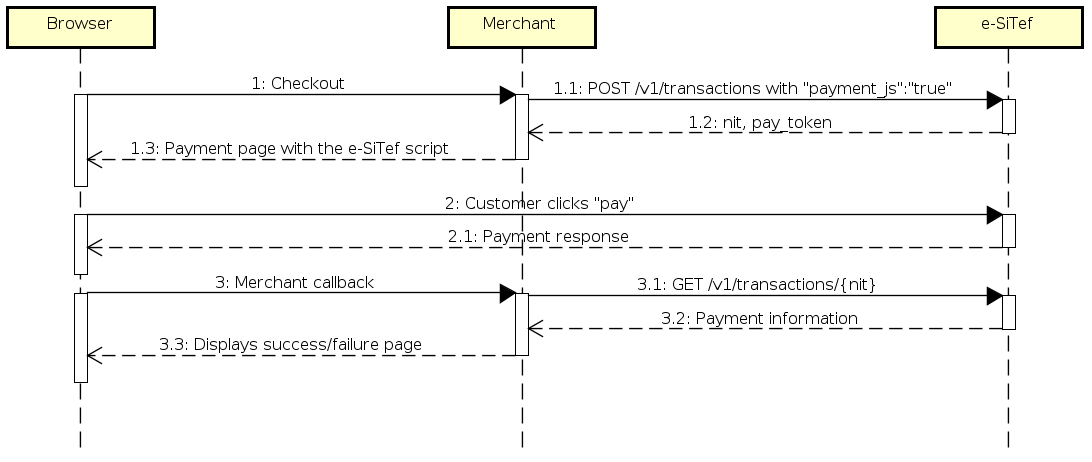JavaScript Payment
Overview
The JavaScript Payment interface allows the customer's card data to be collected by e-SiTef on the merchant's page, exempting the virtual store from manipulating sensitive information and leaving this task under the responsibility of e-SiTef's PCI certified environment.
This interface is recommended to merchants who desire to have their own checkout page, while having a high security standard at the same time.
This solution is integrated with e-SiTef's REST payment interface. Learn more about REST Payment.
Flow

Flow description:
- 1. The customer sends purchase data and proceeds to the payment screen.
- 1.1. The Virtual Store creates a payment transaction on e-SiTef, sending additionally the
payment_jsparameter with the valuetrue. Learn more. - 1.2. e-SiTef returns a NIT and a Pay Token to the store.
- 1.3. The store displays its payment page to the customer, containing e-SiTef's script and the card data fields with the classes specified in Fields with card data.
- 1.1. The Virtual Store creates a payment transaction on e-SiTef, sending additionally the
- 2. Customer fills their card data and clicks "pay". This click must call e-SiTef's payment script,passing the NIT, the Pay Token, their Merchant ID and callback functions (merchant's procedures that will be called after the payment).
- 2.1. e-SiTef returns the payment result, including code, message and transaction status.
- 3. Merchant's callback is called, which then sends e-SiTef's response to the merchant's server.
- 3.1. The Virtual Store queries the transaction on e-SiTef. Learn more.
- 3.2. e-SiTef returns the transaction status, as well as authorization information.
- 3.3. The Virtual Store analyses the received information and redirects the customer to a success or failure screen.